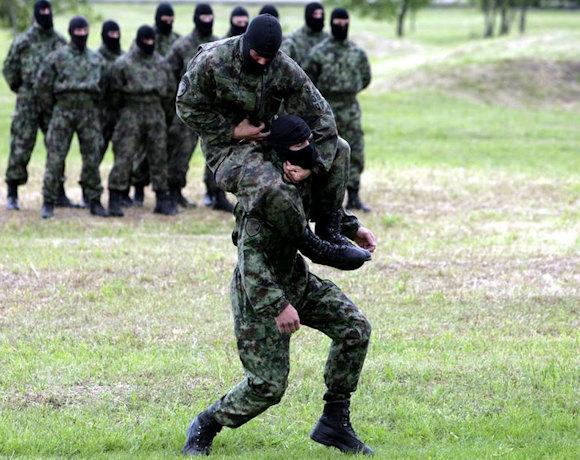Before addressing what is certainly one of the least known aspects of Karate, it is important to remember that the correct pronunciation of the word karate is karate (with the accent on the "e", even if the Japanese language is essentially monotone). The pronunciation karate (with the accent on the second "a"), which is also very widespread even among qualified practitioners, is totally wrong, as the official system of transliteration of ideograms and pronunciation states "Hebon-shiki romaji".
This fact is due to the increasing phonetic influence that the English language has on other languages, including Italian.
To fully understand the nature of karate, it is however necessary to make a very brief historical hint to understand its remote origin and to determine its specific evolution, including military, that has taken place over time.
His birth on the island of Okinawa, in the context of a rural and peasant society, is certainly the best known aspect, but in reality it represents only a period, albeit very significant, in the evolution of karate itself. Its complete history is very complex, sometimes contradictory, and it is often difficult to frame its evolution in a linear way, even by the numerous historians and scholars of the subject. In fact, circumstances, events, dates and places are not always certain ... mainly due to the lack of official documents, precise references, reliable testimonies, accurate translations and, perhaps, also due to the desire not to disclose information outside the of a specific and restricted context.
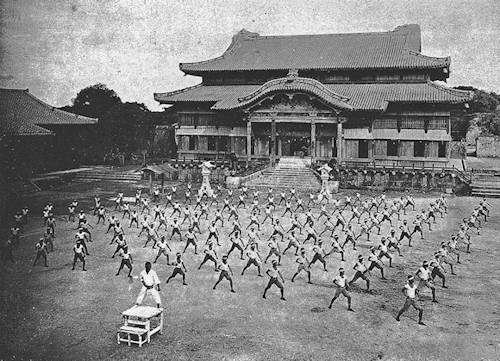 The island of Okinawa (Uchinaa, which in the native language means "the rope in sight", as seen from the sea it resembles a piece of rope floating on the water) is the main island of the Ryukyu archipelago, an archipelago located south-west of Japan and consisting of several of a hundred islands.
The island of Okinawa (Uchinaa, which in the native language means "the rope in sight", as seen from the sea it resembles a piece of rope floating on the water) is the main island of the Ryukyu archipelago, an archipelago located south-west of Japan and consisting of several of a hundred islands.
The history of the Kingdom of the Ryukyu (1400-1800), whose capital was the city of Shuri (in Okinawa), develops, with alternating events, from a period of full opulence and war power (Gusoku - the period of 300 castles) to a period of partial decline or when, at the beginning of 1600, the Kingdom suffered the Japanese invasion which made it essentially a Japanese fiefdom, partially independent, until 1800.
Only in 1879 Okinawa and its archipelago officially became a Japanese Prefecture (Okinawa Prefecture). In any case, for many years the aristocratic and refined Kingdom of the Ryukyu was at the center of the attention and interests of many countries of the Far East as it proved to be an excellent place for commercial and cultural intermediation.
Therefore, for a long time, merchants, diplomats, men of culture, artists, writers, warriors, sailors and fishermen from China, Formosa, Japan, Korea, Siam (Thailand), Dai -Viet (Vietnam) and from Indonesia.
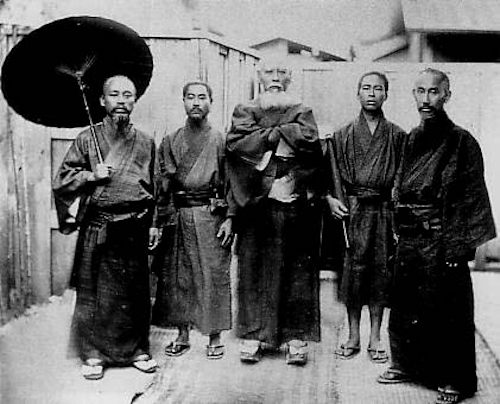 Numerous experts from various combat disciplines (including samurai and sailors), often passing through the Ryukyu islands, provided a notable contribution to the development of those ancient pre-existing fighting techniques, techniques initially secretly transmitted only within the local aristocracies and subsequently elaborated by those same nobles who then decayed and became peasants.
Numerous experts from various combat disciplines (including samurai and sailors), often passing through the Ryukyu islands, provided a notable contribution to the development of those ancient pre-existing fighting techniques, techniques initially secretly transmitted only within the local aristocracies and subsequently elaborated by those same nobles who then decayed and became peasants.
The prolonged contact with the Chinese, including those who moved permanently to the island of Okinawa, as well as the prohibitions on carrying weapons, greatly influenced the further development of the various forms of unarmed combat, or "bare hands".
Chinese influences came mainly from the temple monk school of Shaolin and from the ancient school Wushu-Wutang: two different schools that greatly influenced that martial art that was later defined Okinawa-te (the “hand of Okinawa”), later renamed Dead (the "Chinese hand") and eventually became Karate-do ("The art of the empty hand" or "disarmed").
Although karate was already known in Japan, in 1922, at the invitation of master Jigoro Kano (founder of "modern" Judo), the founder of Shotokan style Karate, the Okinawan Gichin Funakoshi (following photo), performed a formidable demonstration in front of numerous Japanese dignitaries and notables at the Kodokan in Tokyo, a demonstration following which it was decided that karate should be taught and practiced at numerous Japanese universities.
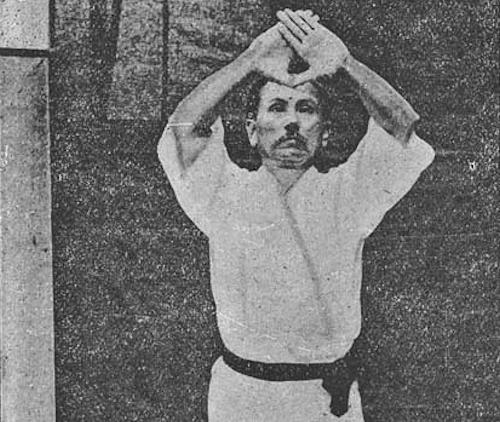 Finally, in 1939, the Dai Nippon Butokukai of Tokyo (in this case in its particular role as a Military Training Center) decreed the official inscription of Karate in the "Japanese Martial Arts" and officially sanctioned its teaching with the Armed Forces, thus giving birth to Japanese karate. However, even though Okinawa has been Japanese for more than a century, the difference between "Okinawa Karate" and "Japanese Karate" still remains.
Finally, in 1939, the Dai Nippon Butokukai of Tokyo (in this case in its particular role as a Military Training Center) decreed the official inscription of Karate in the "Japanese Martial Arts" and officially sanctioned its teaching with the Armed Forces, thus giving birth to Japanese karate. However, even though Okinawa has been Japanese for more than a century, the difference between "Okinawa Karate" and "Japanese Karate" still remains.
In the early Okinawan period, karate, in addition to already being the synthesis of many other forms of combat, presented two main currents (a question still very much debated): the current Shorin (which gave rise to the various styles in which agility and speed were privileged, despite the fairly low guard positions, with the legs very bent to ensure greater stability) and the current Shorei (which gave rise to the various styles in which physical strength and muscular power were privileged, with relatively high guard positions to ensure greater mobility and lunge in attack).
The initial historical styles were basically 4 (Shotokan, Goju ryu, Shito ryu e Wado ryu) while now, following continuous and different interpretations and technical modifications made by the various and successive masters, there are almost a hundred, certainly all valid. These "derivatives", some of which are also famous and widespread, are still affected by the numerous differences between the two currents Shorin e Shorei (terminology, training, power development, types of breathing, basic exercises kihon, fitness exercises kata, combat training kumite, techniques and tactics of combat).
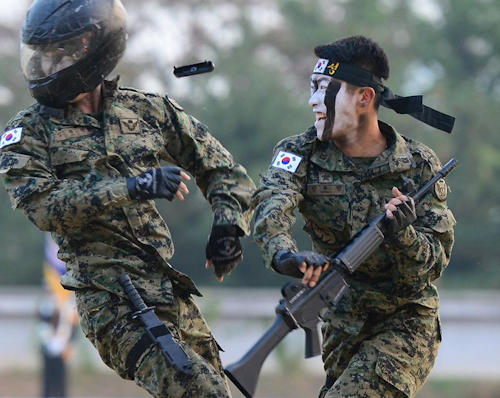 Now, after this premise, it is necessary to pass from Budo, which represents the practice of martial arts to achieve a balanced lifestyle through rigorous inner discipline and meticulous and intense physical training, to Bugei, which represents the practice of martial arts aimed at achieving lethal offensive capabilities for war use. We no longer speak of styles or schools, which can also be very different from each other, but of their final purpose, that is fighting in war.
Now, after this premise, it is necessary to pass from Budo, which represents the practice of martial arts to achieve a balanced lifestyle through rigorous inner discipline and meticulous and intense physical training, to Bugei, which represents the practice of martial arts aimed at achieving lethal offensive capabilities for war use. We no longer speak of styles or schools, which can also be very different from each other, but of their final purpose, that is fighting in war.
This concept defines the Senjo-Karate, or the “karate for the battlefield”, which frames karate according to a specific one I, a particular purpose, for which a “dedicated” conditioning, both physical and mental, is always required. In this case, the starting point is the shugyo, the “rigorous and disciplined practice” and the tanren, the “discipline aimed at the training of the warrior”: the body and mind must be “forged” like a blade that is always sharp and ready for combat.
Parts of the body must be accustomed, as far as possible, to being hit (alas, not to be confused with shime-waza, the strangulation techniques of Judo) and one or more parts of the body must be conditioned to the impact, that is to hit, to break ... to fracture through a continuous and constant hardening of those limbs that will be used as weapons of defense and attack . A fundamental ability to obtain this result is the generation of explosive power, typical of karate and only some other Far Eastern disciplines, called kime (approximately the chinkuchi of the Okinawan schools), that is the ability of sudden contraction of all the muscles and tendons of the body at the moment of impact on the target, thus increasing the power of the blow itself, increasing its devastating effect.
 The topic is very complex and articulated, with some differences between the various styles and the various schools, but, in a nutshell, the kime turns out to be a sum of many factors including lo zanshin, a state of mind of maximum concentration and maximum alertness, thehakkei, the generation of power through energy (ki) produced mainly by the rotation (and vibration) of the hips (koshino kaiten), Theharagei, the control and orientation of the flow of energy generated by the center of the abdomen (seika tanden), and the kiai, the typical scream / cry of karateka (to be avoided in particular operating situations), due to the expansion of that internal energy that is compressed and forcefully conveyed by the abdominal contraction through forced breathing (ibuki).
The topic is very complex and articulated, with some differences between the various styles and the various schools, but, in a nutshell, the kime turns out to be a sum of many factors including lo zanshin, a state of mind of maximum concentration and maximum alertness, thehakkei, the generation of power through energy (ki) produced mainly by the rotation (and vibration) of the hips (koshino kaiten), Theharagei, the control and orientation of the flow of energy generated by the center of the abdomen (seika tanden), and the kiai, the typical scream / cry of karateka (to be avoided in particular operating situations), due to the expansion of that internal energy that is compressed and forcefully conveyed by the abdominal contraction through forced breathing (ibuki).
The demonstration of the destructive capacity of a blow on impact is well expressed in the demonstrations of tameshiwari, where karatekas break wooden boards, piles of tiles, bricks, ice bars or other materials. This ability is preparatory to the study of kyusho o kenketsu, the identification of the vital and deadly points to hit and the consequent study of the atemi-waza, the "techniques of the blows inflicted", or how to hit the various points of the body (in the Chinese arts dim-mak, "The touch of death"), in accordance with one of the first dictates of war combat, which reads "Ichigeki hissatsu”(Certain death with a single blow).
Naturally, the methodology of several blows inflicted in very rapid succession is also developed (shunsoku No. renraku, shots chained in speed) for the immediate annihilation of the opponent.
 The tough combat conditioning must take place in particularly hostile climatic conditions to fortify the body and mind and is called shingitai or tegowai-geiko, and should have its maximum expression in two periods of the year: in kangeiko, 30-day winter training in the coldest month of the year and in the coldest hours of the day, and in shokugeiko, the 30-day summer training in the hottest month of the year and in the hottest hours of the day. This obviously cannot be practicable by a military unit engaged in operational activity, and therefore with very limited time available to devote to all those activities not specifically related to the assigned mission: for this reason particular emphasis and importance is given to initial training. of the fighter in order to guarantee a high level of efficiency and lethality over time, with a minimum of "maintenance activities".
The tough combat conditioning must take place in particularly hostile climatic conditions to fortify the body and mind and is called shingitai or tegowai-geiko, and should have its maximum expression in two periods of the year: in kangeiko, 30-day winter training in the coldest month of the year and in the coldest hours of the day, and in shokugeiko, the 30-day summer training in the hottest month of the year and in the hottest hours of the day. This obviously cannot be practicable by a military unit engaged in operational activity, and therefore with very limited time available to devote to all those activities not specifically related to the assigned mission: for this reason particular emphasis and importance is given to initial training. of the fighter in order to guarantee a high level of efficiency and lethality over time, with a minimum of "maintenance activities".
Since the situations in which the enemy must be faced can be the most disparate, it is advisable to be able to rely on a wealth of particularly effective techniques, already verified in the operational field, which guarantee full applicability in different tactical situations. As an example can be cited theIkadazumo Shinden Ryu, a military method for fighting on boats and boats that is believed to have also influenced the techniques that can be used on land: the techniques and particularly low positions to maintain balance on a moving boat have been acquired and adopted by other systems for further other purposes, such as being able to reduce one's own body surface to the opponent's attack while ensuring greater stability.
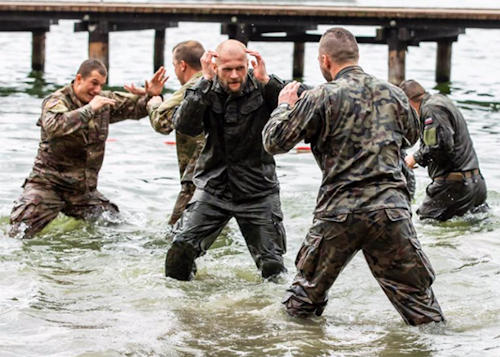 A fundamental concept in the Senjo-Karate is the kamae. Kamae it means "to assume a physical position" but also "to assume a mental attitude".
A fundamental concept in the Senjo-Karate is the kamae. Kamae it means "to assume a physical position" but also "to assume a mental attitude".
In karate the guard position is defined in three ways: Dachi / Tachi, mainly considering the position of one's legs and feet, Hanmi, considering one's guard position in relation to the guard position assumed by the opponent, Kamae / Gamae, considering the entire posture of one's body and the mental attitude, alert and prepared to attack.
Assume the position kamae, means physically assuming a functionally optimal "own position" from which to develop immediately and with determination all those fighting techniques that are fully mastered, and at the same time it means assuming a mental attitude of maximum alertness and perception of the surrounding environment, guaranteeing thus the perception of movements, the estimation of the distance, the speed of action / reaction and the perfect timing of action.
In the fractions of a second in which the kamae is assumed, one must pass into "combat mode", as if an internal spring is loaded ready to trigger an immediate action of explosive power that is concentrated on a specific target. This capacity must be guaranteed regardless of any limitations due to the individual equipment worn, regardless of the degree of visibility, regardless of the space available, regardless of the current weather conditions and regardless of the type of surface on which you are moving.
For this reason a famous karate instructor of the Japanese Imperial Navy said: "He is with the kamae what do you understand if you are ready ... if you are just a desk letter opener or you are instead a dagger with a sharp blade ... and here only daggers are forged! "
Marco Bandioli (Karate - black belt 5 ° Dan)
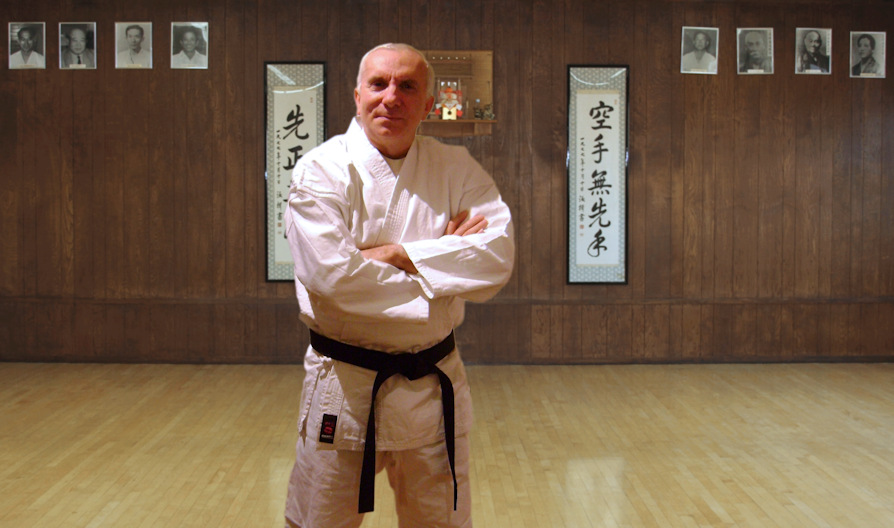
Photo: web / author

